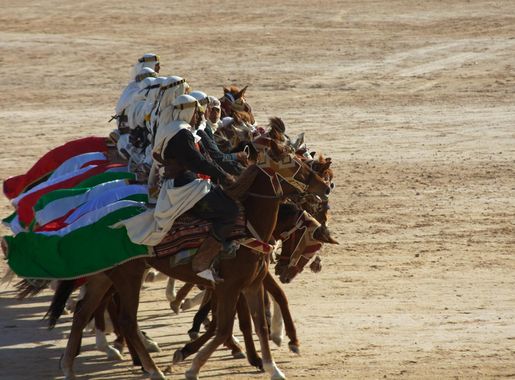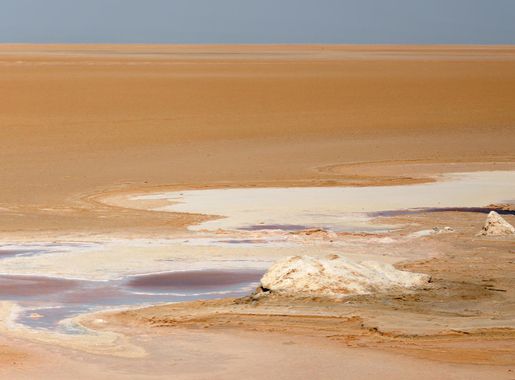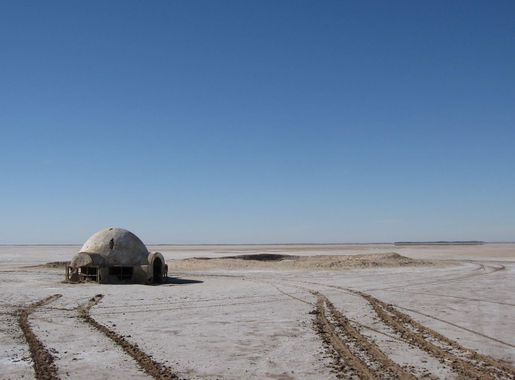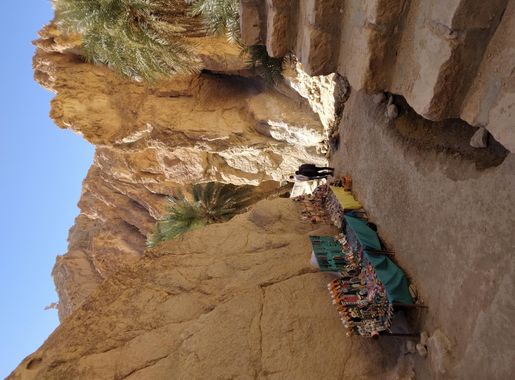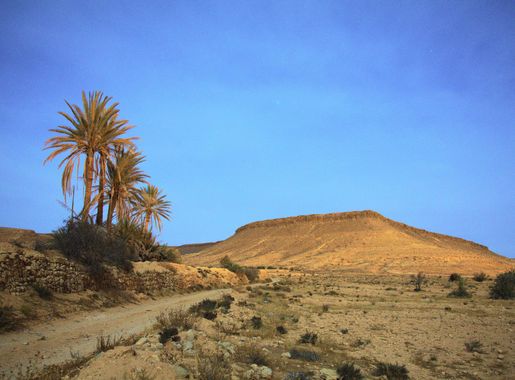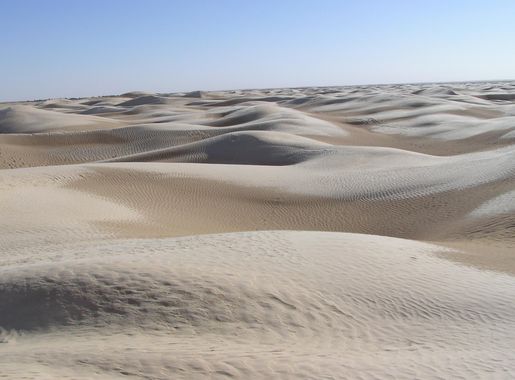
The Enchanting Tunisian Sahara: A Desert Wonderland
Discover the enchanting Tunisian Sahara, where golden dunes, lush oases, and rich cultural heritage create an unforgettable desert adventure.
The Tunisian Sahara, a sprawling expanse of golden dunes and rugged landscapes, offers a unique and captivating experience for adventurous tourists. Located in the southern part of Tunisia, this desert wonderland is a place where the vastness of the sand meets the clear, azure sky, creating a picturesque and serene environment. The Sahara is home to a variety of stunning natural features, including the Grand Erg Oriental, the largest continuous stretch of sand dunes in the Sahara Desert. Visitors to the Tunisian Sahara can explore its breathtaking beauty through a range of activities. Camel trekking is a popular way to traverse the dunes, offering a traditional and authentic way to experience the desert. For those seeking a more thrilling adventure, 4x4 desert safaris provide an exhilarating ride over the shifting sands. The region also boasts several charming oases, such as Douz and Tozeur, where lush palm groves and refreshing springs offer a stark contrast to the arid surroundings. The cultural richness of the Tunisian Sahara is equally remarkable. The desert is dotted with Berber villages, where visitors can immerse themselves in the local traditions and hospitality. The annual Festival of the Sahara in Douz is a highlight, celebrating the region's heritage with traditional music, dance, and camel races. Additionally, the ancient ksours (fortified granaries) found in the area, like those in Ksar Ouled Soltane, provide a glimpse into the historical way of life of the desert's inhabitants.
Local tips in Tunisian Sahara
- Visit between October and April for the most pleasant weather conditions.
- Carry plenty of water and sun protection to stay safe in the desert heat.
- Hire a local guide for an authentic and informative desert experience.
- Don’t miss the annual Festival of the Sahara in Douz for a vibrant cultural immersion.
- Stay overnight in a traditional desert camp for a magical stargazing experience.
The Enchanting Tunisian Sahara: A Desert Wonderland
The Tunisian Sahara, a sprawling expanse of golden dunes and rugged landscapes, offers a unique and captivating experience for adventurous tourists. Located in the southern part of Tunisia, this desert wonderland is a place where the vastness of the sand meets the clear, azure sky, creating a picturesque and serene environment. The Sahara is home to a variety of stunning natural features, including the Grand Erg Oriental, the largest continuous stretch of sand dunes in the Sahara Desert. Visitors to the Tunisian Sahara can explore its breathtaking beauty through a range of activities. Camel trekking is a popular way to traverse the dunes, offering a traditional and authentic way to experience the desert. For those seeking a more thrilling adventure, 4x4 desert safaris provide an exhilarating ride over the shifting sands. The region also boasts several charming oases, such as Douz and Tozeur, where lush palm groves and refreshing springs offer a stark contrast to the arid surroundings. The cultural richness of the Tunisian Sahara is equally remarkable. The desert is dotted with Berber villages, where visitors can immerse themselves in the local traditions and hospitality. The annual Festival of the Sahara in Douz is a highlight, celebrating the region's heritage with traditional music, dance, and camel races. Additionally, the ancient ksours (fortified granaries) found in the area, like those in Ksar Ouled Soltane, provide a glimpse into the historical way of life of the desert's inhabitants.
When is the best time to go to Tunisian Sahara?
Iconic landmarks you can’t miss
Amphitheater of El Jem
Discover the grandeur of the Amphitheater of El Jem, a remarkable Roman site in Tunisia that showcases ancient architecture and rich history.
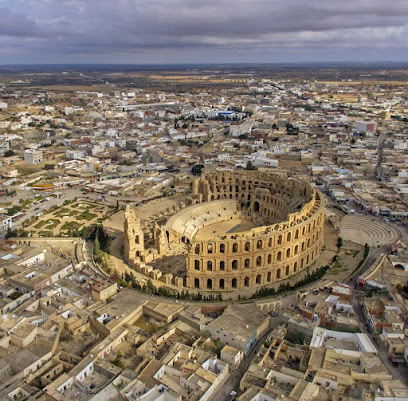
Baths of Antoninus
Visit the Baths of Antoninus in Carthage – a grand historical landmark that showcases the magnificence of Roman architecture and rich cultural heritage.

Friguia Park
Discover Friguia Park in Tunisia, a family-friendly zoo offering a delightful blend of wildlife encounters and educational experiences for all ages.
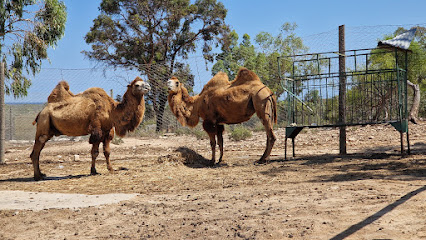
Ribat of Sousse
Discover the Ribat of Sousse: A majestic historical landmark where ancient architecture meets breathtaking coastal views in Tunisia.
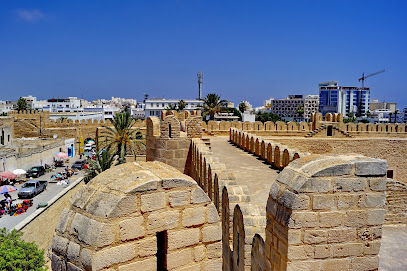
Djerbahood
Discover Djerbahood, Tunisia's unique open-air museum filled with stunning street art and vibrant local culture.

Ribat
Explore Ribat, a historical gem in Monastir, where ancient architecture meets stunning Mediterranean views, offering a glimpse into Tunisia's rich past.
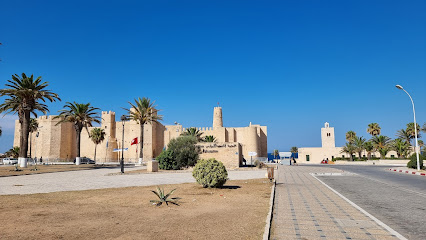
Chebika Oasis
Discover the enchanting Chebika Oasis, where lush landscapes meet the vast Tunisian desert, offering a serene escape and breathtaking views for every traveler.
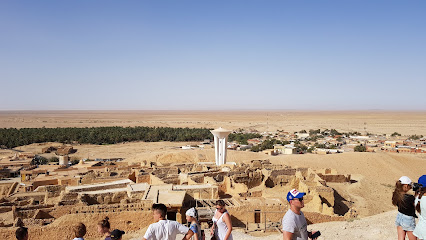
Dougga
Discover the ancient Roman city of Dougga, a UNESCO World Heritage Site in Tunisia, rich in history and breathtaking ruins amidst stunning natural landscapes.
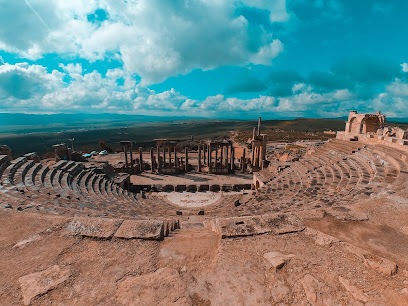
Star Wars: Mos Espa
Discover the magic of Star Wars at Mos Espa, a stunning desert film site in Tunisia that immerses visitors in cinematic history and breathtaking landscapes.
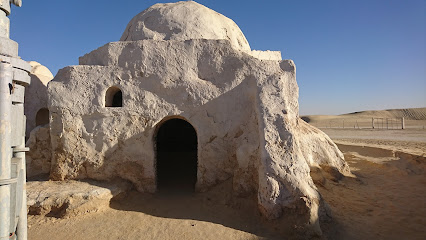
Belvedere Park
Discover Belvedere Park, Tunis - a lush urban paradise offering scenic views, vibrant flora, and serene pathways for perfect relaxation.

Avenue Habib Bourguiba Clocktower
Discover the Avenue Habib Bourguiba Clocktower, a historical gem in Tunis, offering a vibrant blend of culture, architecture, and local life.
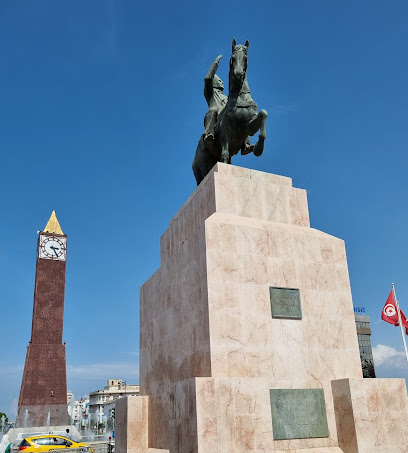
The Water Temple
Explore the Water Temple in Tunis: A historical landmark blending serene nature and rich cultural heritage, perfect for relaxation and discovery.
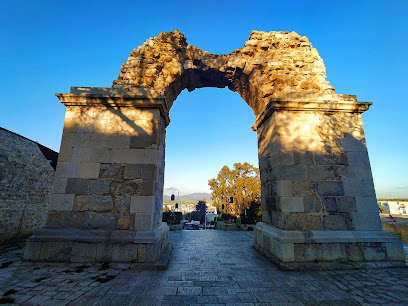
Ong Jmal
Explore Ong Jmal, Tunisia's stunning desert landscape and iconic Star Wars filming site, where adventure meets cinematic history in a breathtaking setting.
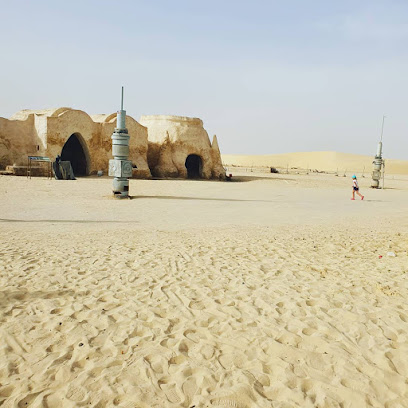
Chak Wak Park
Discover the cultural and natural beauty of Chak Wak Park in Tozeur, Tunisia, where art, history, and nature come together in a captivating landscape.
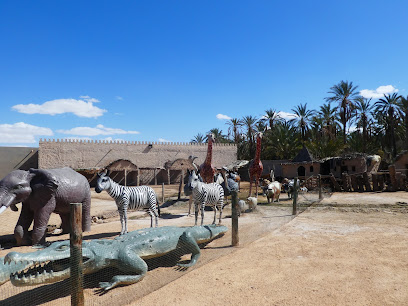
Medina of Yasmine Hammamet
Discover the vibrant charm of the Medina of Yasmine Hammamet, a cultural hub brimming with artisanal crafts, delicious cuisine, and rich history.

Unmissable attractions to see
Amphitheater of El Jem
Explore the breathtaking Amphitheater of El Jem, a UNESCO World Heritage Site showcasing Roman architectural brilliance in Tunisia.
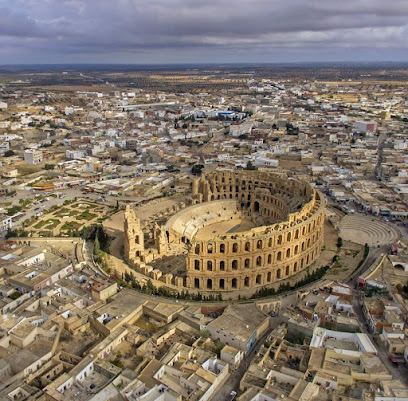
Friguia Park
Experience the charm of Friguia Park, a premier zoo in Tunisia featuring captivating animal shows and a commitment to wildlife conservation.

Ribat of Sousse
Explore the Ribat of Sousse, a historical fortress and museum that encapsulates Tunisia's rich heritage and offers stunning views of the Mediterranean.
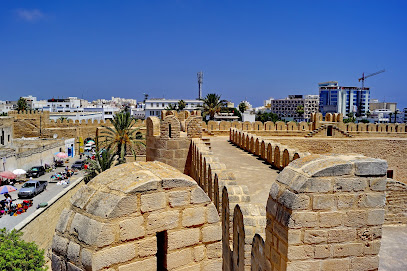
Djerbahood
Discover the captivating Djerbahood, an open-air museum showcasing vibrant street art and local culture in the heart of Djerba, Tunisia.
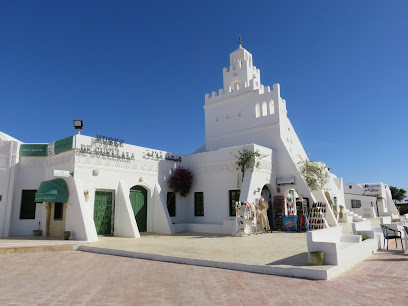
The Water Temple
Experience the serenity and historical charm of The Water Temple, a captivating destination in Tunis that blends nature, culture, and tranquility.
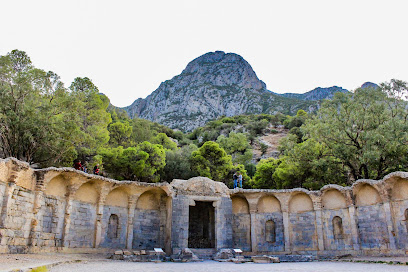
Medina of Yasmine Hammamet
Discover the enchanting Medina of Yasmine Hammamet, where culture, cuisine, and captivating coastal beauty await every traveler.
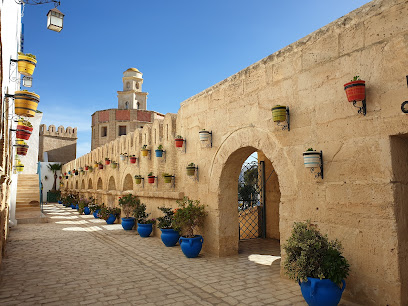
Jebil National Park
Explore the expansive beauty of Jebil National Park, Tunisia's largest national park, brimming with diverse wildlife and breathtaking landscapes.
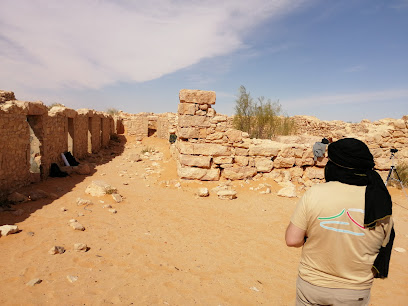
Presidential Palace of Bourguiba
Experience the grandeur of the Presidential Palace of Bourguiba, a historical gem in Monastir showcasing Tunisia's rich heritage and stunning architecture.
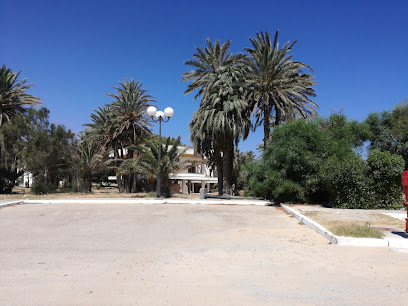
Ksar Ouled Soltane
Discover Ksar Ouled Soltane: A historical gem in Tunisia showcasing Berber architecture and film history amidst stunning desert landscapes.
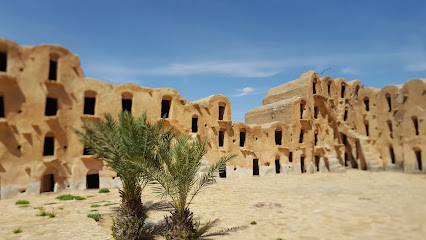
Eden Palm
Explore the cultural heritage of Tunisia at Eden Palm, a heritage museum celebrating the importance of palm groves in local life.
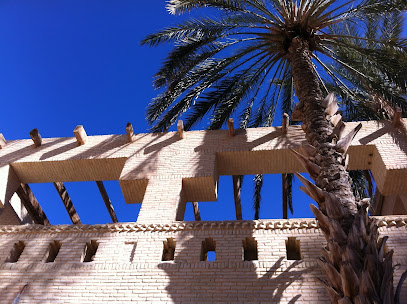
Pupput
Explore the captivating ruins of Pupput, an archaeological gem in Yasmine Hammamet, revealing the rich history of Roman civilization.
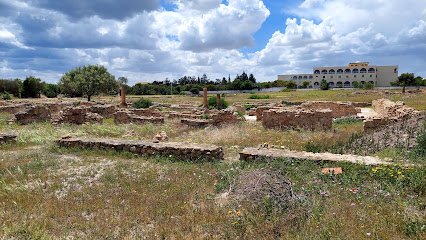
Sahara Desert Tunisia ღ
Discover the breathtaking beauty of the Sahara Desert in Tunisia, where adventure meets tranquility in a stunning natural landscape.

Greater Flamingo Island
Explore Greater Flamingo Island, a serene paradise teeming with elegant flamingos and breathtaking natural beauty, perfect for wildlife lovers and photographers.

Ksar Ghilane
Discover the enchanting Ksar Ghilane oasis, a serene escape in the Sahara filled with adventure, history, and breathtaking landscapes.
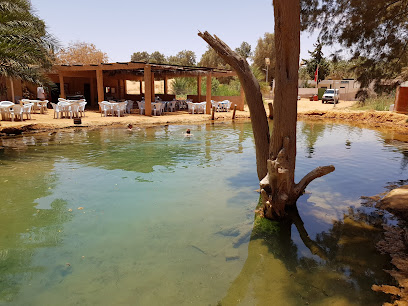
Ksar Said Palace
Discover the elegance of Ksar Said Palace, a historical museum showcasing Tunisia's royal heritage and stunning architecture.
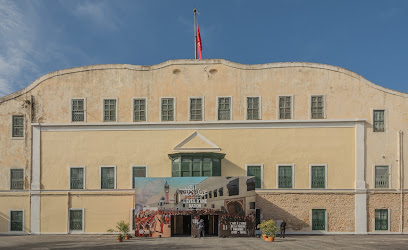
Essential places to dine
Fondouk El Attarine
Experience authentic Tunisian cuisine at Fondouk El Attarine - where tradition meets flavor in the heart of La Medina.
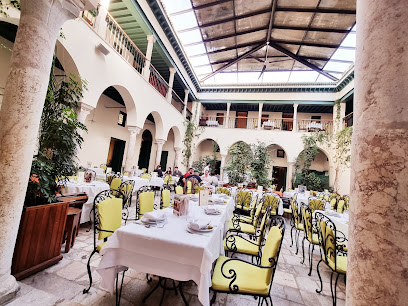
Salon de Thé Restaurant Biwa
Discover authentic Tunisian cuisine at Salon de Thé Restaurant Biwa - where tradition meets modernity in every dish.
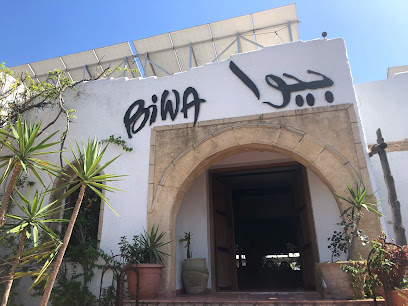
El Ali Restaurant & Cafe
Discover the rich flavors of Tunisia at El Ali Restaurant & Cafe - your gateway to authentic Tunisian cuisine in La Medina.
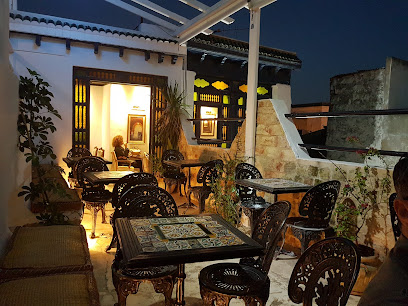
Le Safran
Discover authentic Turkish cuisine at Le Safran in Tunis – where every dish tells a story of rich flavors and warm hospitality.

Dar Belhadj
Discover authentic Tunisian flavors at Dar Belhadj in La Medina - a charming restaurant steeped in culture and culinary delight.
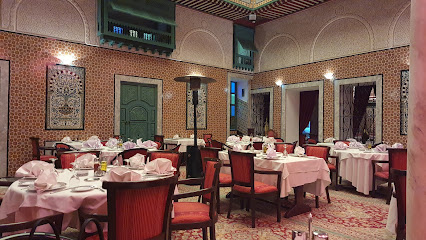
Restaurant Dar Slah
Discover authentic Tunisian flavors at Restaurant Dar Slah in La Medina - a must-visit for food lovers seeking genuine culinary experiences.
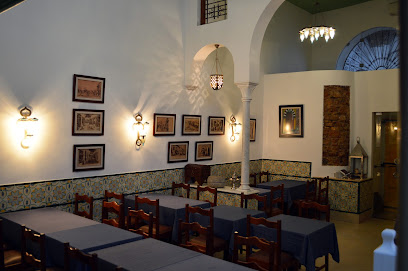
Restaurant La Porte De Sahara
Experience the essence of Tunisian cuisine at Restaurant La Porte De Sahara in Douz - a delightful culinary adventure awaits.
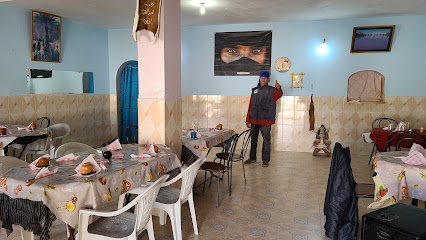
Dar Essafa
Experience authentic Tunisian cuisine at Dar Essafa in La Medina - where every meal tells a story.
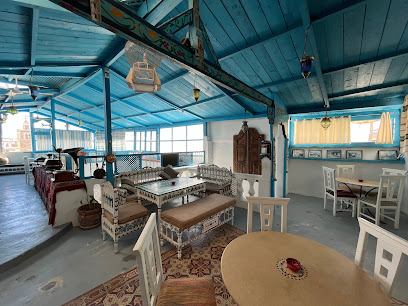
Restaurant Chez Slah
Experience authentic Tunisian cuisine in a warm atmosphere at Restaurant Chez Slah - your gateway to local flavors in Tunis.
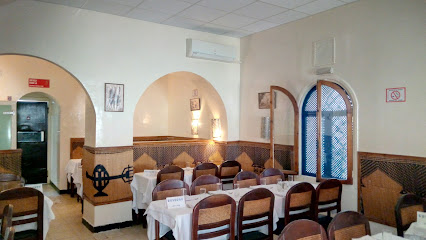
Restaurant Ojja Chouchou
Discover authentic Tunisian flavors at Restaurant Ojja Chouchou in El Halfaouine - a culinary journey through tradition and taste.
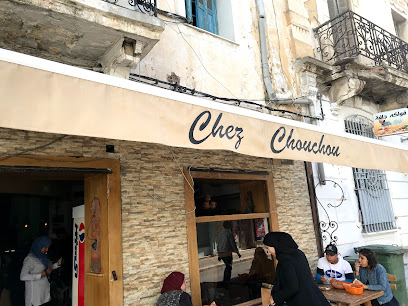
Restaurant La Mamma
Savor the essence of Mediterranean cuisine at Restaurant La Mamma in Tunis – where every dish tells a story.
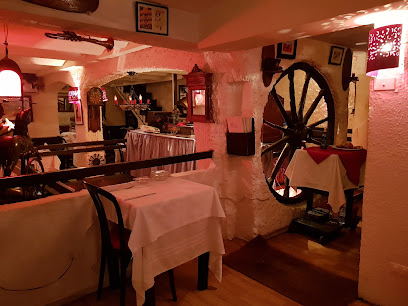
Cafe Bar Restaurant L'orient
Experience authentic Tunisian flavors at Café Bar Restaurant L'orient - your cozy retreat in the heart of Tunis.
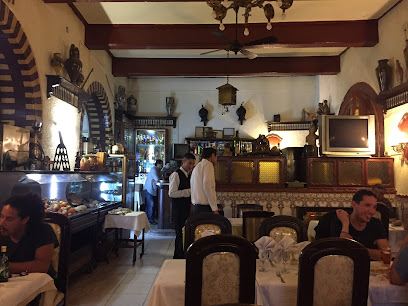
Bab Tounès
Experience authentic Tunisian cuisine at Bab Tounès in La Medina, where tradition meets modernity in every dish.
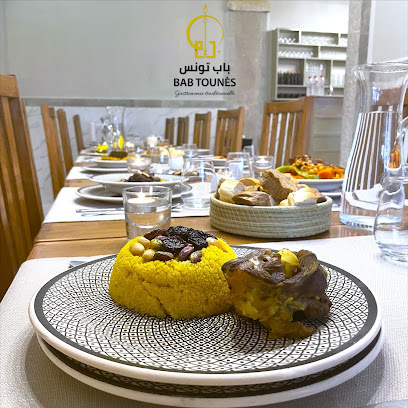
Restaurant Sfax
Experience authentic Tunisian cuisine at Restaurant Sfax - where tradition meets flavor in every dish.
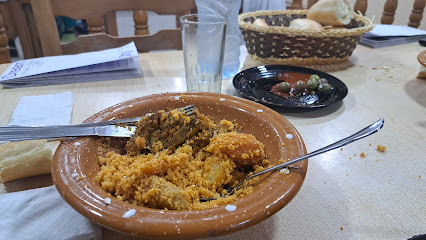
مطعم بوغنيم Restaurant Boughnim
Experience the authentic taste of Tunisia at Restaurant Boughnim – where traditional flavors meet warm hospitality.
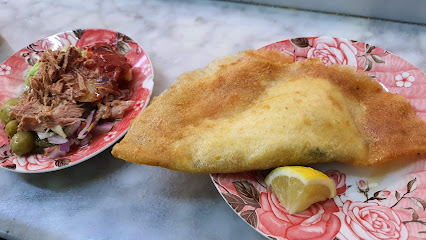
Markets, malls and hidden boutiques
Tunisia Mall
Explore Tunisia Mall in Tunis for an unforgettable shopping and dining experience amidst vibrant local culture.
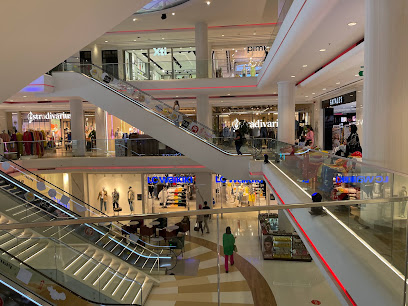
Mall of Sousse
Explore the Mall of Sousse, a premier shopping destination in Tunisia featuring a variety of stores, dining options, and entertainment for all ages.
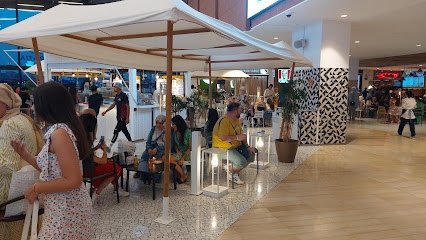
Géant
Discover Géant, the premier hypermarket and shopping mall in Tunis City, where shopping, dining, and entertainment come together in a vibrant atmosphere.
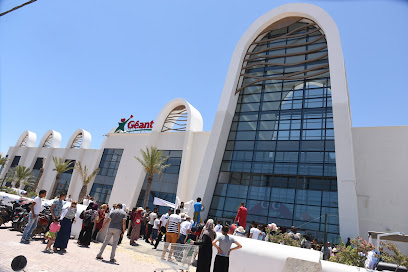
AZUR CITY
Discover AZUR CITY, Tunisia's premier shopping mall, where retail therapy meets culinary delights in a vibrant atmosphere.

Soula Shopping Center
Explore the Soula Shopping Center in Sousse for an unforgettable shopping experience with local and international brands, dining, and entertainment.
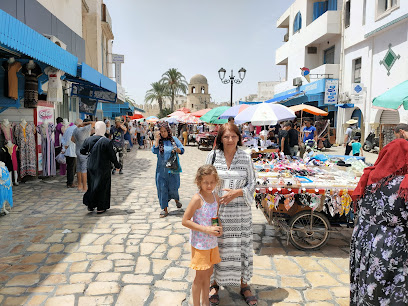
Shopping Center Ali Baba
Experience the vibrant shopping and cultural delights at Shopping Center Ali Baba, your gateway to the best of Hammam Sousse.

Central Market of Tunis
Experience the vibrant culture and rich flavors at the Central Market of Tunis, a must-visit destination for every tourist.
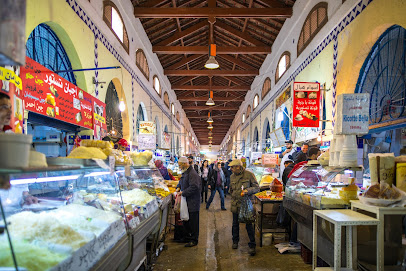
Costa Mall
Discover Costa Mall in Yasmine Hammamet: A vibrant shopping hub offering diverse brands, delightful dining, and an entertaining atmosphere for all.
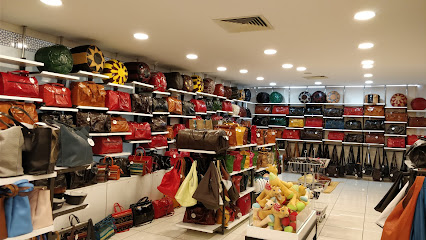
Tunisia Mall 2
Experience the vibrant shopping scene at Tunisia Mall in Tunis, where local culture meets international brands and delicious dining options.
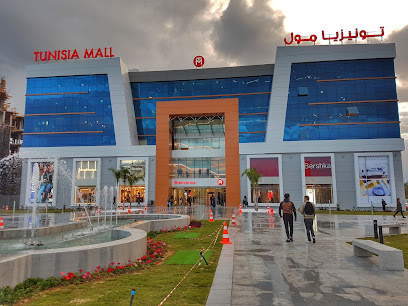
Souk Douz
Discover the vibrant Souk Douz, a bustling market in Tunisia filled with local crafts, delicious cuisine, and rich cultural experiences.

Kpop Shop Tunisia
Discover the ultimate K-Pop destination in Tunisia, filled with exclusive merchandise and a vibrant community atmosphere celebrating Korean pop culture.

Bazaar Houmt Souk
Explore the vibrant Bazaar of Houmt Souk for a unique shopping experience filled with local crafts, spices, and Tunisian culture.
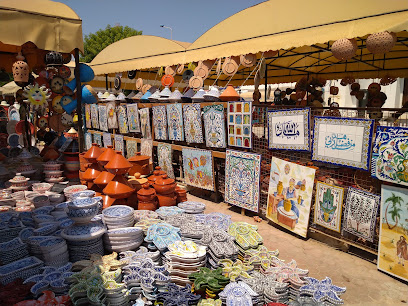
Medina shop
Experience the authentic charm of Hammamet at the lively Medina Shop, where unique treasures and rich culture await every visitor.
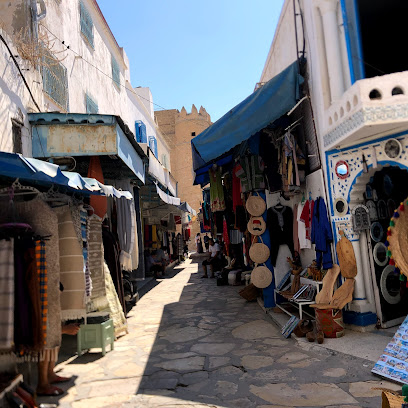
Stradivarius
Explore the chic and trendy world of women's fashion at Stradivarius in Tunis, where style meets modernity in a vibrant shopping experience.
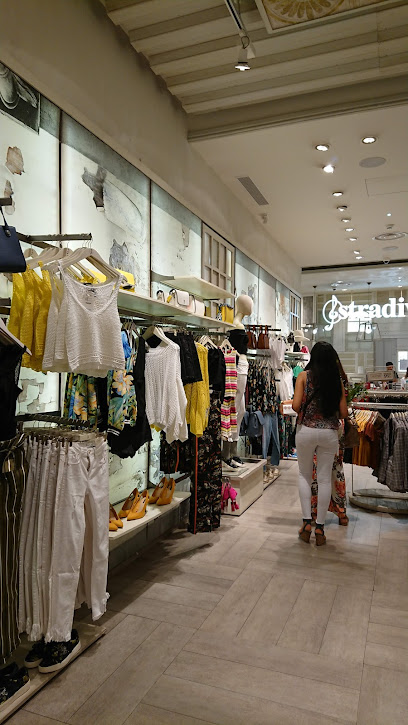
LYOUM
Explore LYOUM Boutique: A fusion of contemporary fashion and traditional Tunisian craftsmanship in the heart of Tunis.

Essential bars & hidden hideouts
Le Carpe Diem - Tunis
Discover the lively atmosphere and exquisite tapas at Le Carpe Diem, La Marsa's premier destination for cocktails and live music.
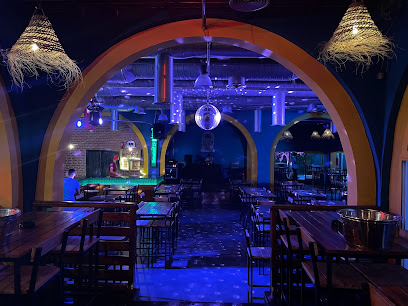
The Factory La soukra
Discover gastronomic excellence at The Factory La Soukra, where local flavors meet international cuisine in a vibrant gastropub setting.

Le Comptoir De Tunis
Discover the essence of Tunisian cuisine at Le Comptoir De Tunis, where every dish tells a story of tradition and flavor.
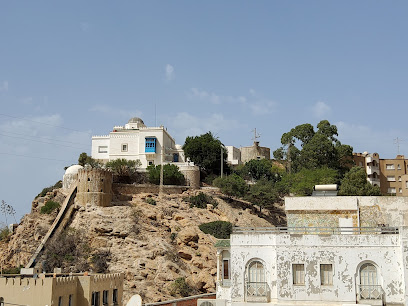
Sahara Lounge
Discover the tranquil oasis of Sahara Lounge in Tozeur, where relaxation meets the rich culture of Tunisian tea traditions.

Tangerine Rooftop
Experience breathtaking sunset views and vibrant nightlife at Tangerine Rooftop, a premier bar in Gammarth, perfect for relaxation and socializing.
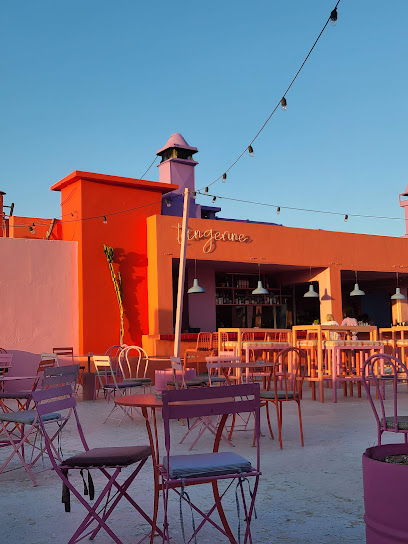
W Resto-Lounge
Discover the vibrant culinary and nightlife scene at W Resto-Lounge in La Marsa, where exquisite flavors meet a lively atmosphere.
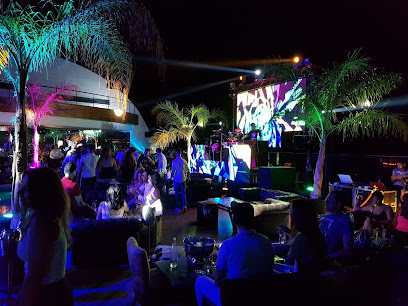
The Zoo Bar
Discover the vibrant flavors of tapas and unwind at The Zoo Bar, a lively hub in the heart of Tunis.
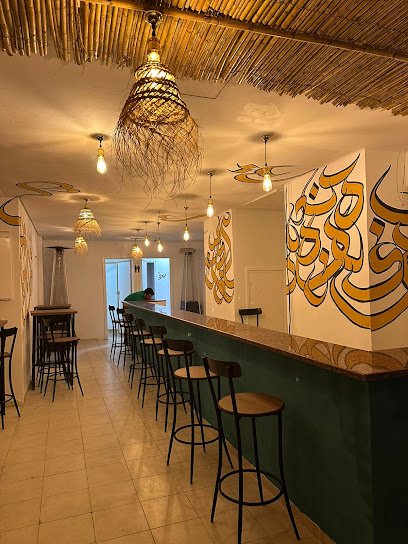
Alba BAR-CLUB
Discover the vibrant nightlife of Gammarth at Alba BAR-CLUB, where cocktails and camaraderie come together in a stunning coastal setting.
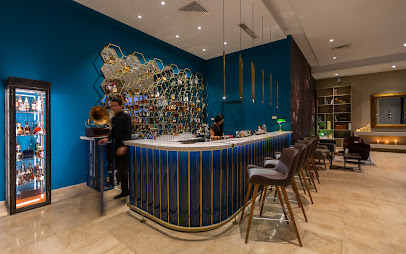
Bellini City Bar Lounge
Experience the vibrant atmosphere of Bellini City Bar Lounge in Tunis, where relaxation meets entertainment amidst beautiful garden views.
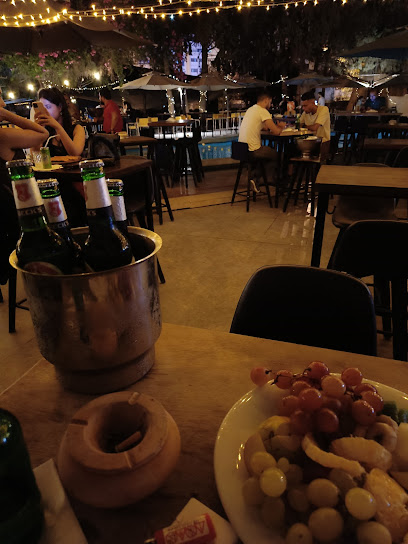
Boeuf sur le toit + Boeuffy + Jardin du boeuf
Discover the best of Tunisian cuisine and live music at Boeuf sur le toit, where every meal is an unforgettable experience.
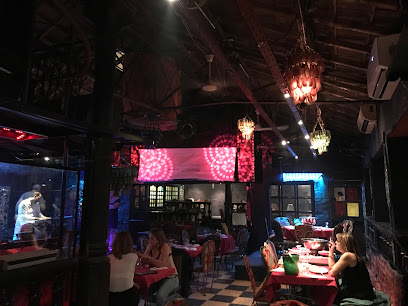
Le Taboo - Tunis
Discover Le Taboo, a stylish lounge in Tunis offering exquisite cocktails and a vibrant nightlife ambiance, perfect for unwinding in style.
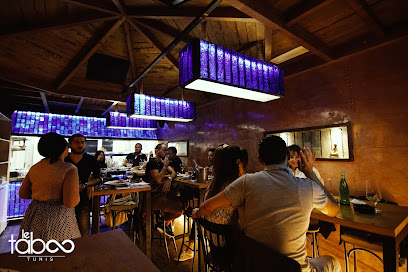
Bayt el fan
Experience the vibrant nightlife at Bayt el fan, a cultural bar in Tunis offering live music, art, and a welcoming atmosphere.
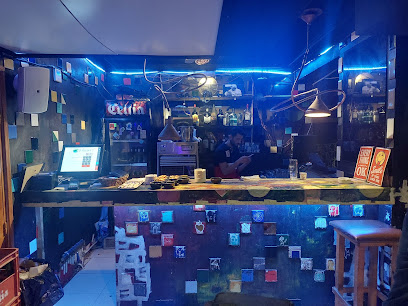
Le Schilling
Discover the vibrant nightlife of Tunis at Le Schilling, where local charm meets international flair in a lively bar atmosphere.
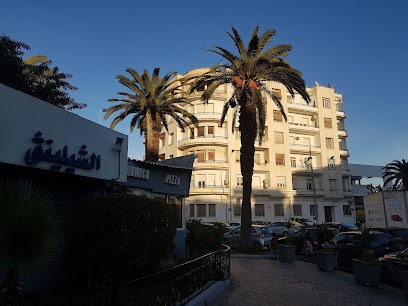
Strasbourg Restaurant Tunis
Discover the vibrant flavors of Tunisia at Strasbourg Restaurant Tunis, a perfect dining spot for tourists seeking an authentic culinary experience.

Le Baron
Discover the vibrant nightlife of Tunis at Le Baron, where local and international drinks meet a lively atmosphere.

Local Phrases about Tunisian Sahara
-
- Helloسلام
[Salam] - Goodbyeوداعا
[Wada'an] - Yesنعم
[Naam] - Noلا
[La] - Please/You're welcomeمن فضلك
[Min fadlik] - Thank youشكرا
[Shukran] - Excuse me/Sorryعذرا
[A'dhra] - How are you?كيف حالك؟
[Kif halak?] - Fine. And you?بخير. وأنت؟
[Bikhayr. Wa ant?] - Do you speak English?هل تتحدث الإنجليزية؟
[Hal tatahadath al-inglizia?] - I don't understandلا أفهم
[La afham]
- Helloسلام
-
- I'd like to see the menu, pleaseأريد رؤية القائمة، من فضلك
[Aridu ru'ya al-qaimah, min fadlik] - I don't eat meatأنا لا أتناول اللحم
[Ana la atnawal al-lahm] - Cheers!في صحتك!
[Fi sahtak!] - I would like to pay, pleaseأريد أن أدفع، من فضلك
[Aridu an adfa', min fadlik]
- I'd like to see the menu, pleaseأريد رؤية القائمة، من فضلك
-
- Help!النجدة!
[Al-najdah!] - Go away!انصرف!
[Insarif!] - Call the Police!اتصل بالشرطة!
[Itasal bil-shurta!] - Call a doctor!اتصل بالطبيب!
[Itasal bil-tabib!] - I'm lostضاعت طريقي
[Da'at tariqi] - I'm illأنا مريض
[Ana mariid]
- Help!النجدة!
-
- I'd like to buy...أريد أن أشتري...
[Aridu an ashtari...] - I'm just lookingأنا فقط أتفرج
[Ana faqat atfarij] - How much is it?كم سعره؟
[Kam si'ruh?] - That's too expensiveهذا غالي جدا
[Hatha ghalin jiddan] - Can you lower the price?هل يمكنك خفض السعر؟
[Hal yumkinuka khafd al-si'ur?]
- I'd like to buy...أريد أن أشتري...
-
- What time is it?كم الساعة؟
[Kam al-sa'ah?] - It's one o'clockالساعة الواحدة
[Al-sa'ah al-wahidah] - Half past (10)العاشرة والنصف
[Al-'ashirah wa al-nisf] - Morningالصباح
[Al-sabah] - Afternoonالظهر
[Al-dhuhur] - Eveningالمساء
[Al-masa'] - Yesterdayالبارحة
[Al-barihah] - Todayاليوم
[Al-yawm] - Tomorrowغدا
[Ghadan] - 1واحد
[Wahid] - 2اثنين
[Ithnayn] - 3ثلاثة
[Thalatha] - 4أربعة
[Arba'ah] - 5خمسة
[Khamsah] - 6ستة
[Sittah] - 7سبعة
[Sab'ah] - 8ثمانية
[Thamaniah] - 9تسعة
[Tis'ah] - 10عشرة
[Asharah]
- What time is it?كم الساعة؟
-
- Where's a/the...?أين...
[Ayna...] - What's the address?ما هو العنوان؟
[Ma huwa al-anaan?] - Can you show me (on the map)?هل يمكنك أن تريني (على الخريطة)؟
[Hal yumkinuka an tarini (ala al-kharitah)?] - When's the next (bus)?متى القادم (الحافلة)؟
[Mata al-qadim (al-hafilah)?] - A ticket (to ....)تذكرة (إلى ...)
[Tazkirah (ila ...)]
- Where's a/the...?أين...
History of Tunisian Sahara
-
The Berber tribes, also known as Amazigh, were the earliest inhabitants of the Tunisian Sahara. Their settlements date back to prehistoric times, with evidence of their presence found in rock art and ancient artifacts. The Berbers were known for their unique culture, language, and architectural styles, which include the distinctive underground homes of Matmata.
-
During the Roman Empire, the region that is now the Tunisian Sahara was an important part of the province of Africa Proconsularis. The Romans introduced advanced agricultural techniques, built roads, and established military outposts. Remnants of Roman architecture, such as the amphitheater in El Djem, bear witness to this period of prosperity and integration into the Roman world.
-
In the 7th century, the Arab conquest brought Islam to the Tunisian Sahara. This period marked a significant cultural and religious transformation as the Berber tribes gradually converted to Islam. The introduction of Arabic language and Islamic customs deeply influenced the region's cultural and social fabric. The Ksar Ouled Soltane and other fortified granaries (ksour) were built during this period, showcasing the blend of Berber and Arab architectural styles.
-
The Ottoman Empire controlled the Tunisian Sahara from the 16th to the 19th centuries. This era saw the establishment of new trade routes and the fortification of key towns. The Ottomans also introduced administrative changes and military garrisons. The legacy of Ottoman rule is still visible in the region's architecture, including the medina of Tozeur with its distinctive brickwork.
-
In the late 19th century, Tunisia became a French protectorate. The French presence in the Tunisian Sahara led to the development of infrastructure such as railways and roads, aimed at exploiting the region's natural resources. The colonial period also brought about significant social and economic changes. The influence of French culture can still be seen in the architecture and urban planning of Saharan towns like Douz and Tataouine.
-
Following Tunisia's independence from France in 1956, the Tunisian Sahara experienced a period of modernization and development. The government invested in tourism, promoting the region's unique landscapes and cultural heritage. The Sahara's oases, such as those in Nefta and Tozeur, became popular tourist destinations. Efforts to preserve traditional Berber culture and promote sustainable tourism have been ongoing, reflecting the region's rich history and vibrant future.
Tunisian Sahara Essentials
-
The Tunisian Sahara is accessible from various entry points in Tunisia. The nearest international airport is Djerba-Zarzis International Airport (DJE), which is well-connected with major European cities. From Djerba, you can take a domestic flight to Tozeur-Nefta International Airport (TOE), which is situated closer to the Sahara. Alternatively, you can reach the Sahara by road from major Tunisian cities like Tunis or Sfax. The drive offers a scenic view of Tunisia's diverse landscapes.
-
Once in the Tunisian Sahara, transportation options include rental cars, 4x4 vehicles for desert tours, and local buses. 4x4 vehicles are highly recommended for navigating the desert terrain. Organized tours often provide transportation and guides, making it easier to explore the area. Taxis are available in towns and cities, but always agree on a fare beforehand. Camel rides are a traditional and popular way to experience the desert.
-
The official currency in Tunisia is the Tunisian Dinar (TND). Credit cards are accepted in larger hotels and some restaurants, but it is advisable to carry cash, especially in rural areas and smaller establishments. ATMs are available in larger towns such as Tozeur, Douz, and Kebili. It is recommended to exchange money at official exchange bureaus or banks.
-
The Tunisian Sahara is generally safe for tourists, but standard precautions should be taken. Avoid traveling alone in remote areas, especially at night. Stay in well-populated and well-lit areas. Be aware of your surroundings and keep your belongings secure. Currently, there are no specific high-crime areas targeting tourists, but always stay vigilant.
-
In case of emergency, dial 197 for police assistance and 190 for medical emergencies. It is highly recommended to have travel insurance that covers medical emergencies. In towns like Tozeur and Douz, there are medical facilities available. Pharmacies are also accessible for minor health issues. For more serious conditions, you may need to travel to a larger city for better medical facilities.
-
Fashion: Do dress modestly, especially in rural areas and when visiting religious sites. Avoid wearing revealing clothing. Religion: Do respect local customs and traditions. Always remove your shoes when entering a mosque. Public Transport: Do be respectful and offer your seat to elderly passengers. Don’t eat or drink on public transport. Greetings: Do greet people with a handshake. A slight bow of the head is also a sign of respect. Eating & Drinking: Do try local delicacies and accept food offerings graciously. Don’t refuse hospitality, as it is considered impolite.
-
To experience the Tunisian Sahara like a local, visit the markets (souks) to buy traditional crafts and local produce. Engage with the local Bedouin communities, who are often willing to share stories about their nomadic lifestyle. Don’t miss visiting the Star Wars filming locations in Matmata and the ancient troglodyte dwellings. For a unique experience, attend a traditional desert festival such as the Festival of the Sahara in Douz.
Nearby Cities to Tunisian Sahara
-
Things To Do in Djerba
-
Things To Do in Sfax
-
Things To Do in Sousse
-
Things To Do in Monastir
-
Things To Do in Sabratha
-
Things To Do in Hammamet
-
Things To Do in Tunis
-
Things To Do in Constantine
-
Things To Do in Tripoli
-
Things To Do in Annaba
-
Things To Do in Bizerte
-
Things To Do in Setif
-
Things To Do in Leptis Magna
-
Things To Do in Bejaia
-
Things To Do in Zliten

